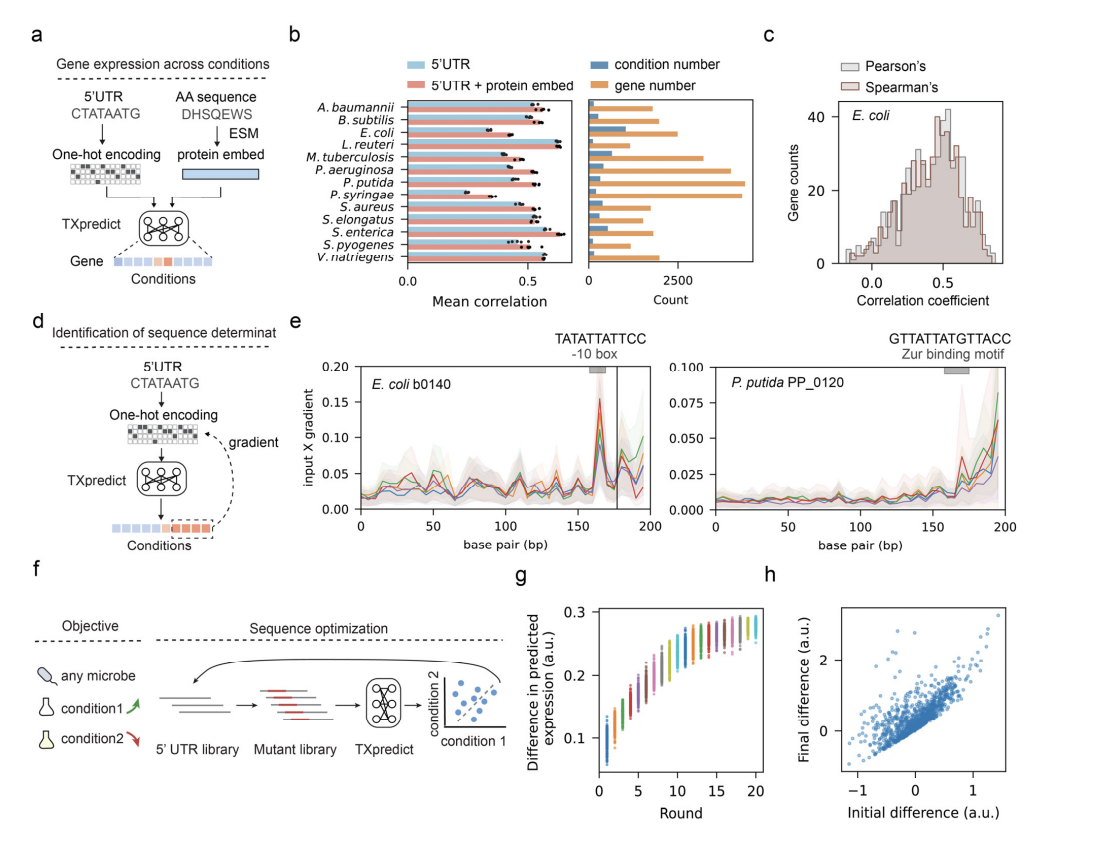
Understanding TXpredict: A New Solution for Microbial Transcriptome Prediction
The Challenge
Predicting transcriptomes from genome sequences is difficult, especially for microbes that are hard to culture or need complex methods like RNA sequencing. This gap in knowledge limits our understanding of how microbes adapt, survive, and regulate their genes.
Current Methods
Current transcriptome profiling methods are mostly experimental, like RNA sequencing, which can be slow and costly. These methods also struggle with microorganisms that have unique growth needs or live in extreme environments. Existing computational models are not effective across different taxonomic groups and often overlook important evolutionary factors.
Introducing TXpredict
Researchers from the Beijing Institute of Technology and Harvard University have developed **TXpredict**, a groundbreaking framework for predicting transcriptomes using annotated genome sequences. This method uses a pre-trained protein language model (ESM2) to extract useful features and applies evolutionary principles. TXpredict improves scalability, generalizability, and computational efficiency while allowing for condition-specific gene expression predictions.
Key Features of TXpredict
– **Data-Driven**: Based on transcriptome data from 22 bacterial and 10 archaeal species, including 11.5 million gene expression measurements.
– **Advanced Technology**: Utilizes a transformer encoder architecture with multi-head self-attention to understand complex sequence relationships.
– **Fast and Efficient**: Completes transcriptome predictions in just 22 minutes on standard hardware.
Accuracy and Scalability
TXpredict has shown high accuracy, achieving a mean Spearman correlation coefficient of 0.53 for bacteria and 0.42 for archaea. It has successfully predicted transcriptomes for over 900 additional genomes, covering many previously uncharacterized species.
Bridging the Gap
TXpredict effectively connects genome sequences to transcriptome predictions, enhancing our understanding of gene regulation and adaptation. This innovative approach has the potential to advance research in synthetic biology and ecology.
Future Implications
While TXpredict has some limitations, such as reliance on existing RNA-seq datasets, it lays the groundwork for new applications in microbial research.
Get Involved
Explore the full research paper and follow us on Twitter, join our Telegram Channel, and connect with our LinkedIn Group. Don’t miss out on our 60k+ ML SubReddit community.
Webinar Opportunity
Join our upcoming webinar for insights on improving LLM model performance while ensuring data privacy.
Transform Your Business with AI
Stay competitive by leveraging AI solutions. Here’s how:
– **Identify Automation Opportunities**: Find customer interaction points that can benefit from AI.
– **Define KPIs**: Ensure your AI initiatives have measurable impacts.
– **Select the Right AI Solution**: Choose tools that fit your needs.
– **Implement Gradually**: Start small, gather data, and expand wisely.
For AI KPI management advice, contact us at hello@itinai.com. For ongoing insights, follow us on Telegram or Twitter.
Redefine Your Sales and Customer Engagement
Discover AI solutions that can enhance your business processes at itinai.com.


























